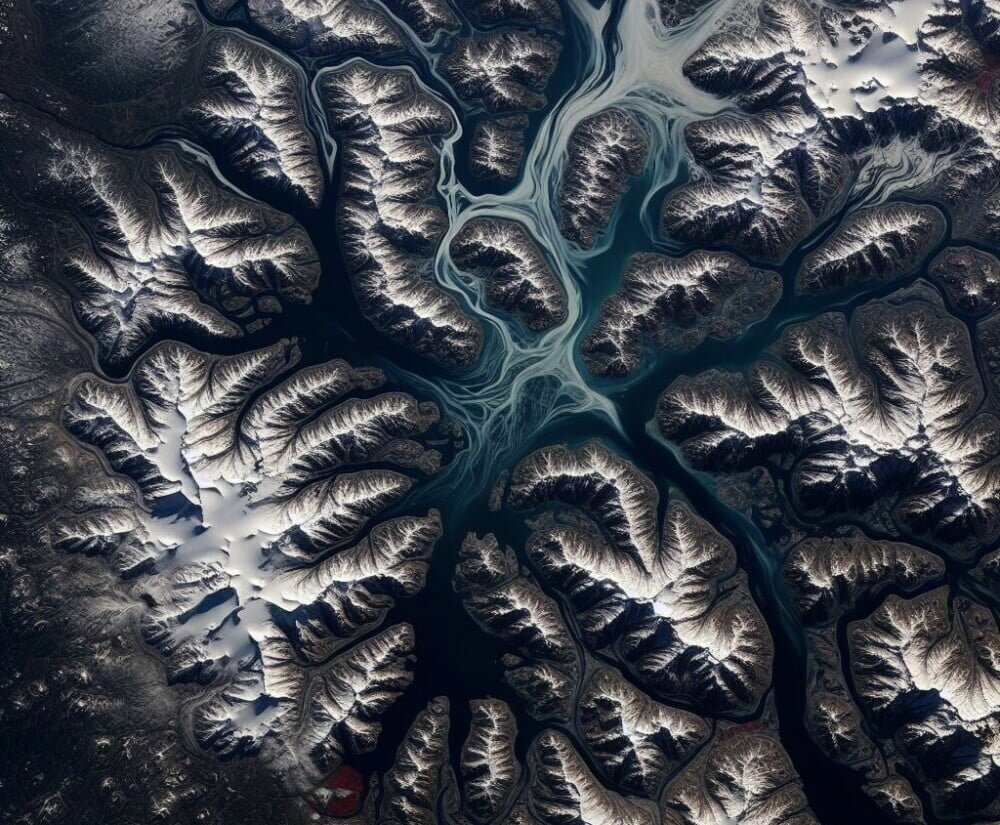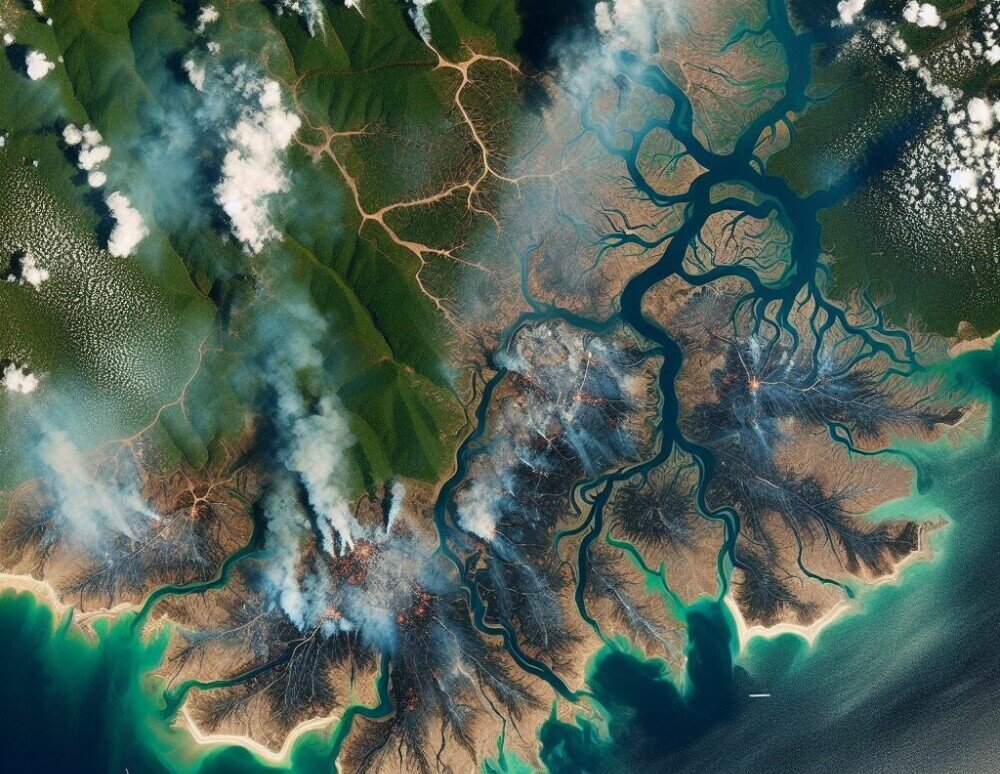As Earth faces increasing environmental challenges, advanced monitoring techniques are crucial. Satellite technology, a product of space exploration, has become key in measuring Earth’s temperature, greenhouse gas emissions, sea levels, and atmospheric gases to enhance our understanding of climate change. These measurements are crucial for raising awareness, improving our climate and mitigation strategies, and forecasting the Earth’s future environmental conditions.
Share your thoughts in the comments below. Your input enriches our collective understanding and drives meaningful conversations. Together, let’s embrace innovation and work towards a sustainable future.
The Role of Satellite Technology in Climate Change Awareness

Satellite technology, with its unique vantage point from space, offers an unparalleled ability to collect data over the entire Earth’s surface, including its most remote areas. This section outlines the various applications of satellite technology in monitoring key indicators of climate change:
Satellites equipped with thermal sensors provide accurate and continuous data on the Earth’s surface and atmospheric temperatures. This information helps scientists understand global warming trends and the impact of greenhouse gases on the Earth’s climate.
Greenhouse Gas Emissions
Specialized satellites can identify and measure concentrations of greenhouse gases like carbon dioxide and methane in the atmosphere. This data is vital for tracking emission sources and understanding their global distribution and impact.
Sea Level Monitoring: Satellites use radar altimeters to measure sea surface heights, providing data on sea-level rise from melting ice caps and global warming.
Atmospheric Gas Analysis: Satellites assess the Earth’s atmospheric composition, tracking changes in ozone and other climate-affecting gases.
Q&A Section
How Do We Use Space Research to Monitor Climate Change?
Space research, mainly using satellites, offers crucial data for understanding climate patterns and human impact on Earth. Continuous monitoring from space allows researchers to gather long-term data essential for tracking climate changes.
How Is Space Technology Used in Climate Change?

Space technology is used to observe and analyze a wide array of indicators relevant to climate changes. This includes tracking shifts in weather patterns, monitoring deforestation rates, assessing the health of agricultural lands, and observing the melting of polar ice. These observations are essential for creating models to predict future climate scenarios and for devising strategies to mitigate adverse effects.
How Does NASA Monitor Climate Change?
NASA leads in climate research, using Earth observation satellites to monitor environmental parameters, including:
- Aqua and Terra Satellites: These satellites track Earth’s water cycle, land health, and atmospheric changes, providing crucial data.
- Orbiting Carbon Observatory-2 (OCO-2): OCO-2 measures atmospheric CO2 levels, shedding light on carbon emissions and absorption.
- Sea Level Observatory Satellites: These satellites measure ocean heights, helping track sea-level rise, a clear indicator of climate change.
Through these and other missions, NASA provides critical data that supports global efforts to understand and combat climate changes.
How Does Space Exploration Affect Climate Change?
While space exploration itself has a minimal direct impact on climate change, the technologies developed and the data collected from space missions have profound implications for understanding and addressing climate issues. The launch of rockets does produce greenhouse gas emissions; however, the environmental insights gained from space exploration missions far outweigh these impacts. Moreover, the space industry is increasingly focused on sustainability and reducing its environmental footprint.
How Can Space Technology Protect Our Planet?

Space technology is crucial for protecting our planet as it enhances environmental monitoring, disaster response, and sustainable resource management. Here are several ways it achieves this:
Early Warning Systems: Satellites provide critical data for early warning systems for natural disasters such as hurricanes, floods, wildfires, and droughts. Timely information can help in evacuating people from dangerous areas, thereby saving lives and reducing economic losses.
Environmental Monitoring: Continuous observation of Earth’s ecosystems allows for the detection of illegal deforestation, monitoring of biodiversity, and assessment of water quality in lakes and oceans. This data is essential for enforcing environmental protection laws and for conservation efforts.
Climate Change Mitigation: Space technology monitors greenhouse gas emissions and their sources, helping verify climate agreements and guiding policymakers in designing effective carbon reduction strategies.
Agricultural Efficiency: Satellite imagery helps in precision farming techniques, allowing for the efficient use of water, fertilizers, and pesticides. This not only reduces the environmental impact of farming but also helps in increasing crop yields to feed a growing global population.
Renewable Energy Development: Space technology aids in the mapping and exploration of renewable energy sources such as solar and wind. Satellite data can identify the most suitable locations for solar panels and wind turbines, contributing to the global transition to renewable energy.
Conclusion
The applications of space technology in monitoring climate change are vast and invaluable. As we continue to face the challenges of a warming planet, the data provided by satellites will be crucial in guiding our responses and strategies. These advanced technologies not only offer a clearer picture of our current environmental status but also empower us with the knowledge to predict future changes and take informed actions towards sustainability. The continued support and advancement of space technology are essential in our collective effort to understand, mitigate, and adapt to the impacts of climate change, ensuring a resilient and sustainable future for our planet.
Join the Discussion: Your Thoughts Matter
We’ve explored the pivotal role of space technology in understanding and combating climate change. Now, it’s your turn to weigh in. The path forward is a collaborative one, and every insight brings us closer to sustainable solutions.
We’d love to hear from you
How do you see space technology shaping our fight against climate change?
Any innovative ideas on using these technologies for Earth’s protection?
Know of unique space tech applications for environmental benefit not mentioned here?






